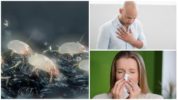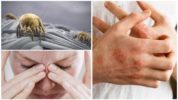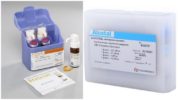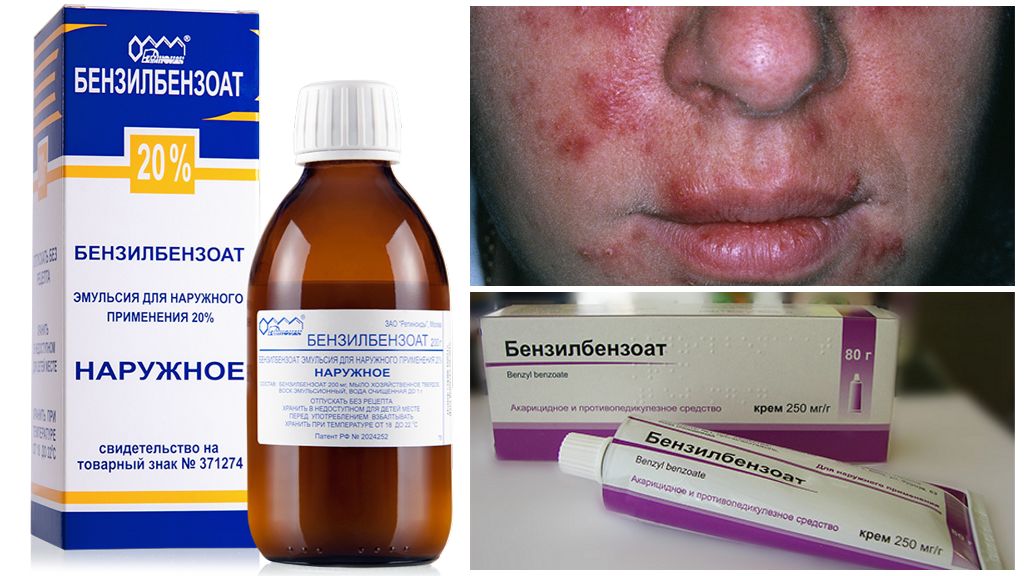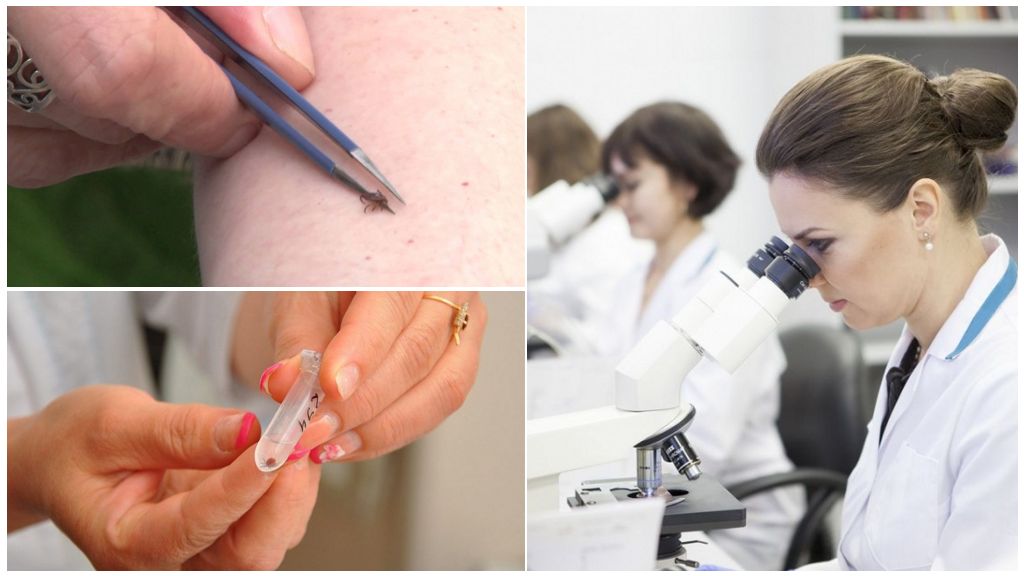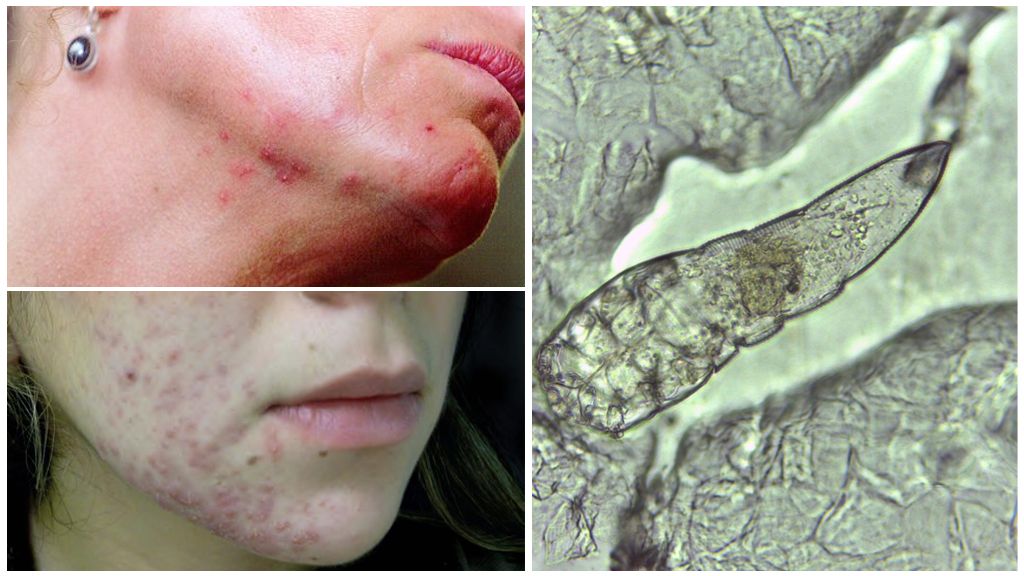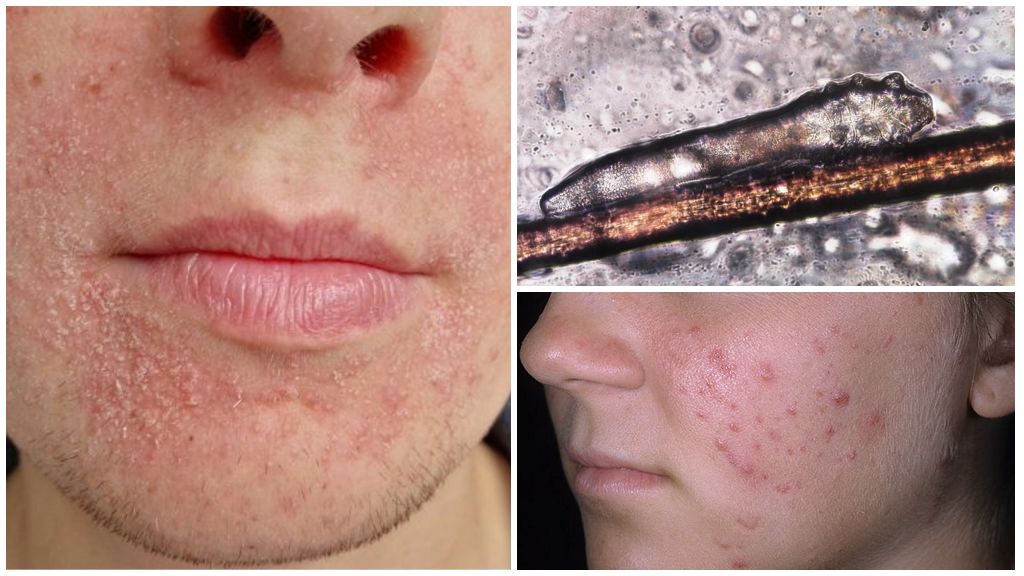- Dust mite allergy
- Dust mite allergy
- Allergy Medicines
- Allergy Sprays
About an allergy to dust, and even asthmatic attacks, everyone has heard. And some even experienced it on themselves. But allergy sufferers know that even if you constantly walk with a damp cloth and wash the dust, the attacks do not disappear. Their number decreases, they do not become so heavy, but they do not stop at all. This means that the allergen has not disappeared. The term “dust allergy” arose when household waste was not yet carefully examined under a microscope. After studying it turned out that in fact people are allergic to dust mites, and not to house dust.
Dust mites in the house
Dust mites - synanthropic species that live next to humans. In total, there are 150 species of these arthropods. Their size ranges from 0.1 to 0.5 mm. In house dust, 3 species are most often found:
- Dermatophagoides farinae;
- Dermatophagoides pteronyssinus;
- Euroglyphus maynei.
It is these mites in most cases that cause allergies to dust. They are ideally suited for living in an apartment with its temperature 18-25 ° C, comfortable for a person. Dust mites are saprophages, that is, they feed on dead particles of skin, hair and animal hair.
Dusting does not save from ticks, since they live where the maximum number of particles of dead skin accumulates. The main habitats of these parasites are:
- pillows;
- mattresses;
- bedspreads;
- Carpets
- books
- cushioned furniture.
Allergies are not caused by dust mites, but their excrement. The ability to feed dust with ticks is provided by special enzyme proteins that contribute to the digestion of dead human epidermis. The same proteins are excreted from the digestive tract along with feces. Once in the air, enzymes cause an allergic reaction.
Interesting!
A dust mite allergy in a child born in rural areas is much less common. This is due to the fact that village children begin to contact animals very early. In urban areas, the environment is relatively sterile and the child’s immunity does not develop.
Dust Mite Allergy Symptoms
Dust mite excrement causes a reaction if it enters the respiratory tract. Allergy symptoms are the same as when reacting to pollen or other airborne allergens:
- difficulty breathing
- discharge from the nose;
- conjunctivitis;
- skin irritation;
- swelling of the airways;
- Quincke's edema.
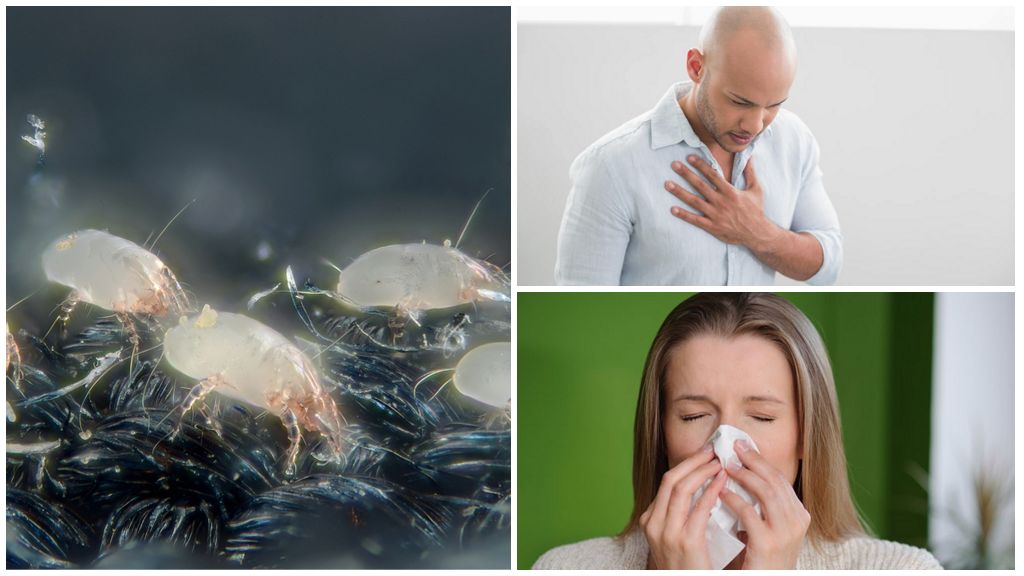
All these signs are usually separate diseases that can occur not only with allergies to dust and ticks. Because of this, it is often difficult to understand the true cause of the ailment.
In more severe cases, dust mites cause asthma attacks:
- shortness of breath
- cough;
- wheezing
- chest congestion.
Since with an allergy to a house dust mite, the severity of an asthma attack depends on the amount of allergen, suffocation attacks may occur in a patient.
On a note!
A feature of tick-borne bronchial asthma is an increase in nighttime attacks in the autumn-spring period.It is this time that is most favorable for the development of dust mites, since for reproduction they require an air humidity of more than 55%.
Also, allergies are manifested by a rash on the skin. The usual “non-hazardous” urticaria may also be allergic to a dust mite. One of their main habitats is the bed. Spinning in a dream, a person rubs parasite feces in the skin. With the sudden appearance of allergy symptoms on the skin, one should be wary. Especially if the rash appears after sleep.
On a note!
Due to exacerbation of skin irritation in the morning, allergic urticaria is often mistaken for dust mite bites. These arthropod species do not bite humans. Their food supply is different. And for a random bite, they are too small.
How to understand that a tick allergy
With an allergic reaction to arthropods, a person becomes easier on the street. If allergies were to pollen or other “standard” allergens, there would be no relief. Outflows from the nose and exacerbation of asthma occur during sleep. Allergy intensifies during periods of reproduction of dust mites: in autumn and spring. In these seasons, air humidity is also high, which contributes to the activity of dust mites. In winter, the temperature in the apartment is quite high, but heating devices dry the air and inhibit arthropods. Symptoms of allergies also appear on fluff and feather.
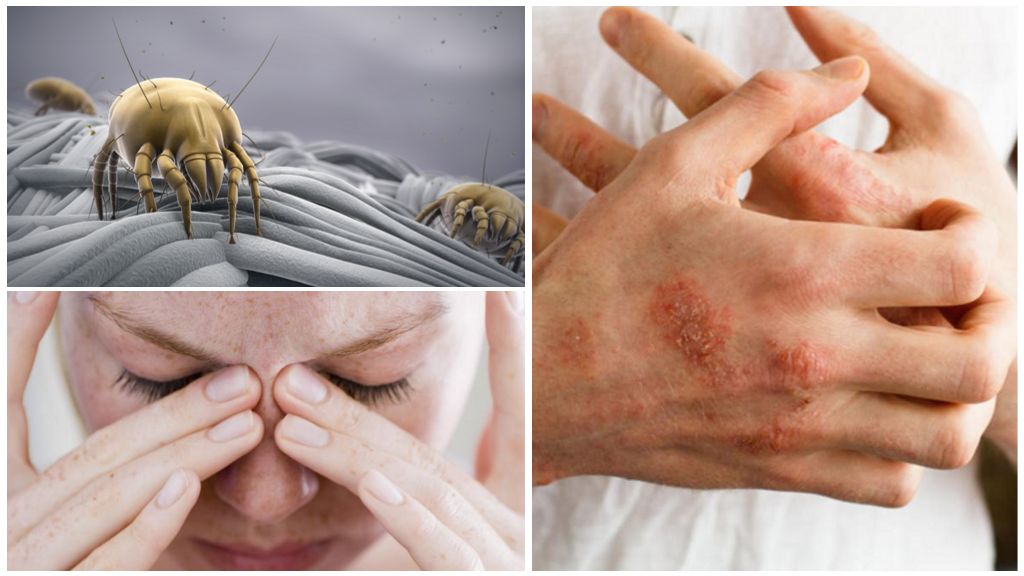
On a note!
Signs of tick-borne allergy are especially pronounced in young children. Toddlers crawl on carpets and often have fun with soft toys. These things are a hotbed of dust mites. In addition, children have not yet developed immunity.
Treatment methods
Allergy treatment until complete recovery has not yet been developed. Most often, to alleviate the condition, they use:
- antihistamines of any of four generations;
- nasal agents that constrict blood vessels;
- corticosteroids, which the doctor individually selects for each patient.
Important!
Corticosteroids are the last line of defense of conventional medicines. Assign only in severe cases. While you can do without them, they are not used.
Generations of antihistamines
Generations of antihistamines differ not only in the time of invention, but also in their effect on the body.
- Sedatives that cause drowsiness. They have a large number of side effects, but they are good for breathing difficulties. The first generation antihistamines last 4-6 hours. The most famous diphenhydramine, tavegil and suprastin are first-generation antihistamines.
- The second generation does not cause drowsiness, but it helps better not with difficulty breathing, but with allergic skin irritation. They have serious contraindications for people with cardiovascular diseases. These are Claritin, Zodak, Gistalong and others.
- This generation of antihistamines is most often used to relieve symptoms of tick-borne allergies. They have almost no contraindications and cope well with both the skin reaction to dust mites and asthmatic attacks. Drugs are allowed for people with CCC diseases.
- The lack of the fourth generation - funds are contraindicated in children and pregnant women. This group includes: Xizal, Levocetirizine, Bamipin and Desloratadine.
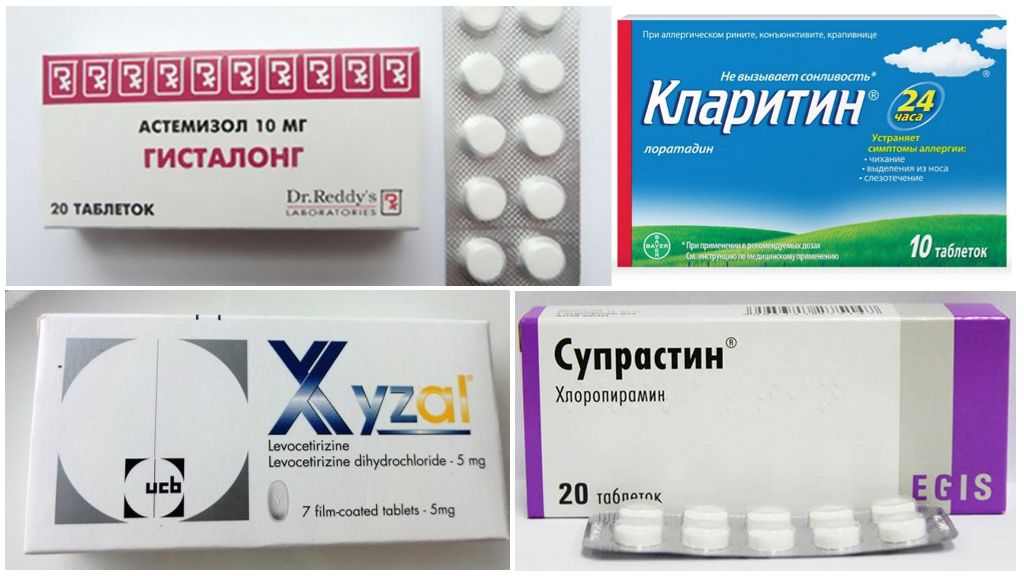
All of the listed medications require continuous medication. Upon interruption, an allergy to dust returns.
Nasal products
These include drops and sprays that make breathing easier. Work only with a mild allergic reaction. They have no effect on allergies. Nasal remedies are almost useless if the flow of mucus from the nose is very large. The active substance is washed off by mucus, before it reaches the mucosa. In addition, it is not able to reach the tissues lining the maxillary and frontal sinuses. Trademarks (names) of funds may be different. You need to focus on the active substance:
- Dimetinden;
- Phenylephrine;
- Fluticasone furoate;
- Mometasone;
- Fluticasone propionate;
- Xylometazoline hydrochloride;
- Azelastine.
Nasal preparations are used in combination with antihistamines.
Serious Allergy Treatments
They can be called fifth generation antihistamines, but their independent use is strictly prohibited. With their help, therapeutic therapy is possible until complete remission and in the future courses that support the body in a state of recovery. All these anti-allergenic drugs require the mandatory supervision of an allergist. The course of treatment and recovery is carried out only in medical institutions. Due to certain side effects, self-medication with these drugs for allergies is strictly contraindicated.
On a note!
These drugs contain allergen in small doses. The reaction of the body to an allergen can be very different, so treatment is always carried out only under the supervision of a doctor and in the office of a medical institution.
First, the doctor determines what the body produces an allergic reaction to and only then prescribes the drug. For the treatment of allergies to dust mites, there are two drugs:
- Alustal Allergen Tick;
- Staloral Allergen ticks.
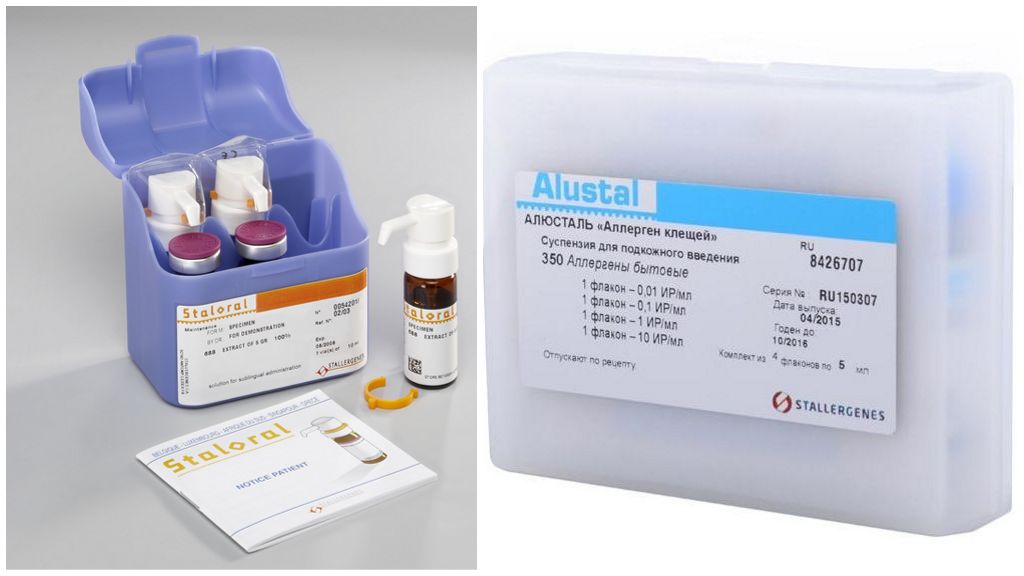
The preparations are the same in composition, the method of administration varies. The first for subcutaneous injections, the second - drops under the tongue.
The active substance in both remedies is the same: an allergen extract from dust mites of the species Dermatophagoides pteronyssinus and Dermatophagoides farinae. Both allergens in the funds are in equal proportions.
Important!
Therapy with these agents is carried out only under the supervision of a doctor. With a violent reaction of the body or an error in the dosage, anaphylactic shock can develop very quickly.
The initial course is relatively inexpensive, from 2 thousand rubles. The cost of support starts from 3 thousand rubles.
Dust Mite Allergy Prevention
Preventing the development of allergies is easier than treating it. But dust mites are unlikely to be completely eliminated if you do not burn the house. Can reduce the dust mite population and reduce the severity of the body's reaction using fairly simple measures:
- frequent change of bed linen (at least 1 time per week);
- change of blankets from natural materials to sintepon;
- getting rid of all carpets made of natural wool and soft toys;
- thorough drying after washing all bedding in the fresh air;
- freezing blankets and beds in winter;
- regular cleaning of all upholstered furniture;
- saline treatment of the floor, skirting boards and furniture;
- thorough dusting from all surfaces;
- maintaining the lowest possible humidity in the room.
Carpets and upholstered furniture are conveniently cleaned with a vacuum cleaner, but the dust bag needs to be shaken out on the street immediately after cleaning.
